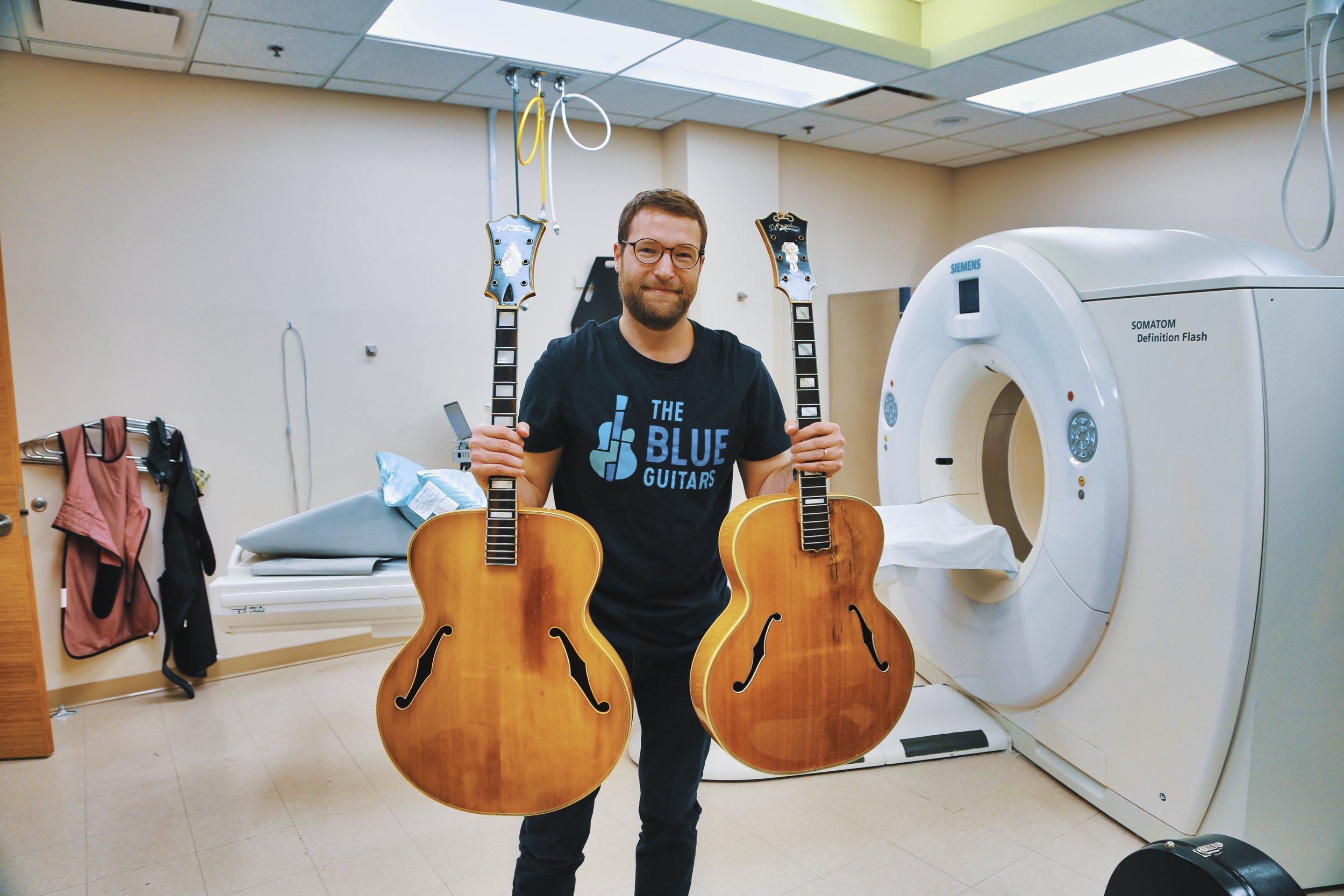
For those who love the archtop guitar and the music it has inspired through history.
WHAT IS
THE ARCHTOP PROJECT?
This project exists to showcase the art, science and historical significance of the evolution in the design and luthiery of the archtop guitar.
The modern archtop guitar was created a century ago. It was the work of Lloyd Loar and the Gibson Guitar and Mandolin Mfg, Ltd, Co. in 1923/24.
Arguably the most classic of archtop designs, the Gibson L-5 features a carved top and back, f-holes and raised bridge. Loar is credited with designing the L-5 archtop, F-5 mandolin, H-5 mandola, and K-5 mandocello throughout his time with Gibson, but the creation of these iconic instruments was the result of many people working together at the right time and place in Kalamazoo, Michigan.
In the early 1930’s, jazz music swept the nation and the archtop became a featured rhythm instrument. It is during this time that the design of new archtop models shifted from the production floors of Gibson Guitars in Kalamazoo to the small shop of the master luthier, John D’Angelico in New York City. D’Angelico’s instruments were popular among performers, cementing his legacy into history and leaving us with some of the most iconic archtop designs, including the Excel and the New Yorker.
Explore the history of the archtop guitar through our unique archive of iconic instruments, vintage and modern alike, and discover the science behind their signature sounds.

We analyze the acoustic fingerprints of iconic archtop guitars and present the results in a way everyone can understand.
A note on D’Addario and D’Angelico
From Jim D’Addario
In the 1930’s, most of the wound strings produced for musical instruments used large diameter core wires in relationship to the wrap wire diameter primarily because it was easy to make a string this way. This was the beginning of a key breakthrough that D’Angelico and D’Addario explored.
For example, the most popular steel string of the time, the Black Diamond brand, would have a low E string composed of a core with a diameter of .022” and wrap wire of .017”. D’Angelico intuitively instructed D’Addario to try to make a .056 string with as small a core and as large a diameter wrap wire as possible. The challenge was to get that core as small as they could without the string prematurely breaking. D’Addario and D’Angelico would land upon an .018” core and a .020” diameter wrap wire which was a significant departure from standard string design. The resulting difference in tone and feel was astonishing. The thinner core enabled the string to vibrate more freely, providing a louder, deeper fundamental tone, without sacrificing the bright crisp overtones of a string properly wound on a hexagonally shaped core wire. And the bond the hex core provided insured that each string would be consistent and longer lasting than other competitive offerings. The specifications for the steel core acoustic and electric guitar strings of the future had just been redefined by D’Angelico and D’Addario!
John, Sr. always enjoyed approaching artists and trying to find out what they were looking for in a string. He had close relationships with some of the most influential players of the time, often making special string sets for them and always learning from each experience. They were also willing beta testers and tested many of the work-in-progress experiments he would work on. The most famous jazz virtuosos of the era knew Dad as a friend and a valued resource. These professionals provided continuous feedback to John, Sr. and he passed that intel on to D’Angelico and other luthiers throughout his career.
Many thanks to our sponsors and collaborators:
D’Addario and Company • The Archtop Foundation • Diverse Dimensions Engineering • Indiana University South Bend • St. Joseph Hospital • Hiroya Tsukamoto • Kevin DeCloedt
The Archtop Project was inspired by the work of Sam Zygmuntowicz and George Bissinger. Their work, Strad 3D, conducted in collaboration with the Violin Society of America’s Oberlin Acoustics Workshop sheds new light on works of the 18th century Cremonese masters, Antonio Stradivari and Guiseppe “del Gesu” Guarneri.
Visit www.strad3D.org for more information.
For more information on instrument acoustics please visit
The Violin Society of America - Oberlin Summer Workshops (vsaweb.org)
